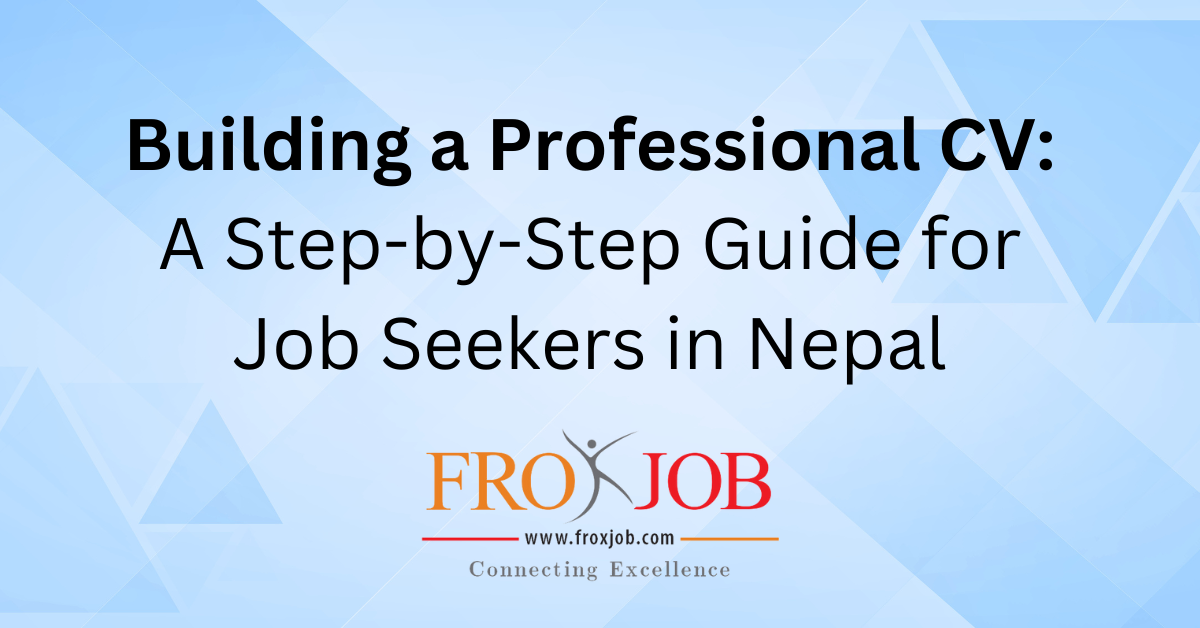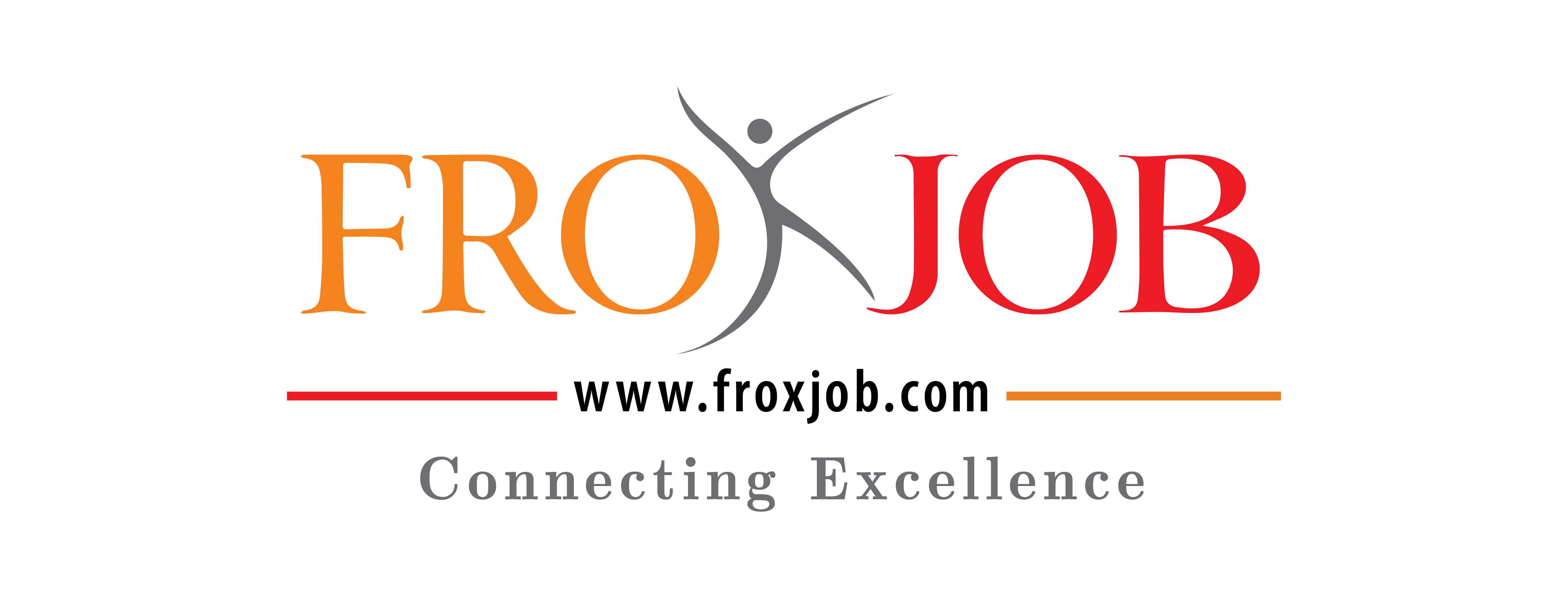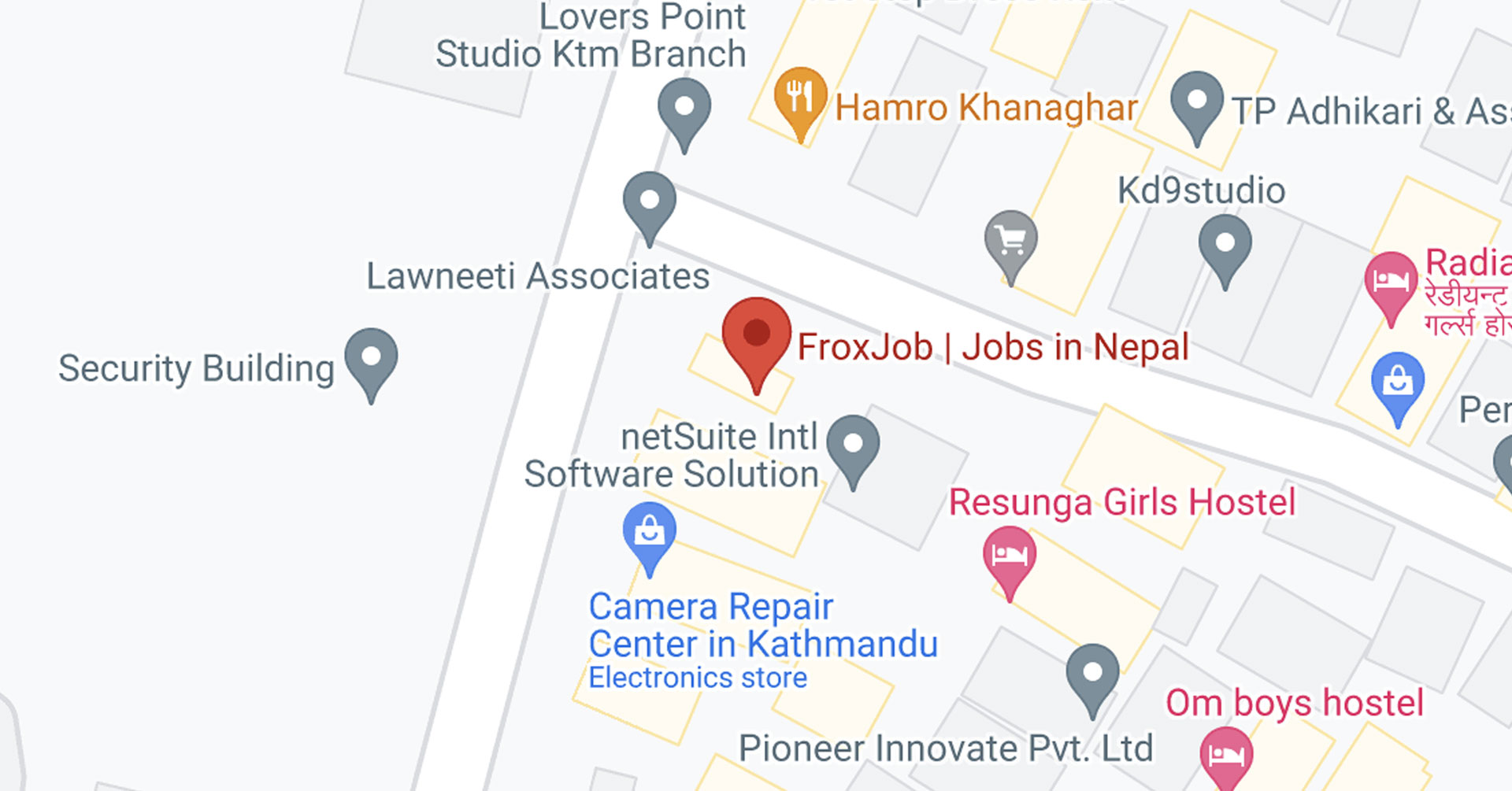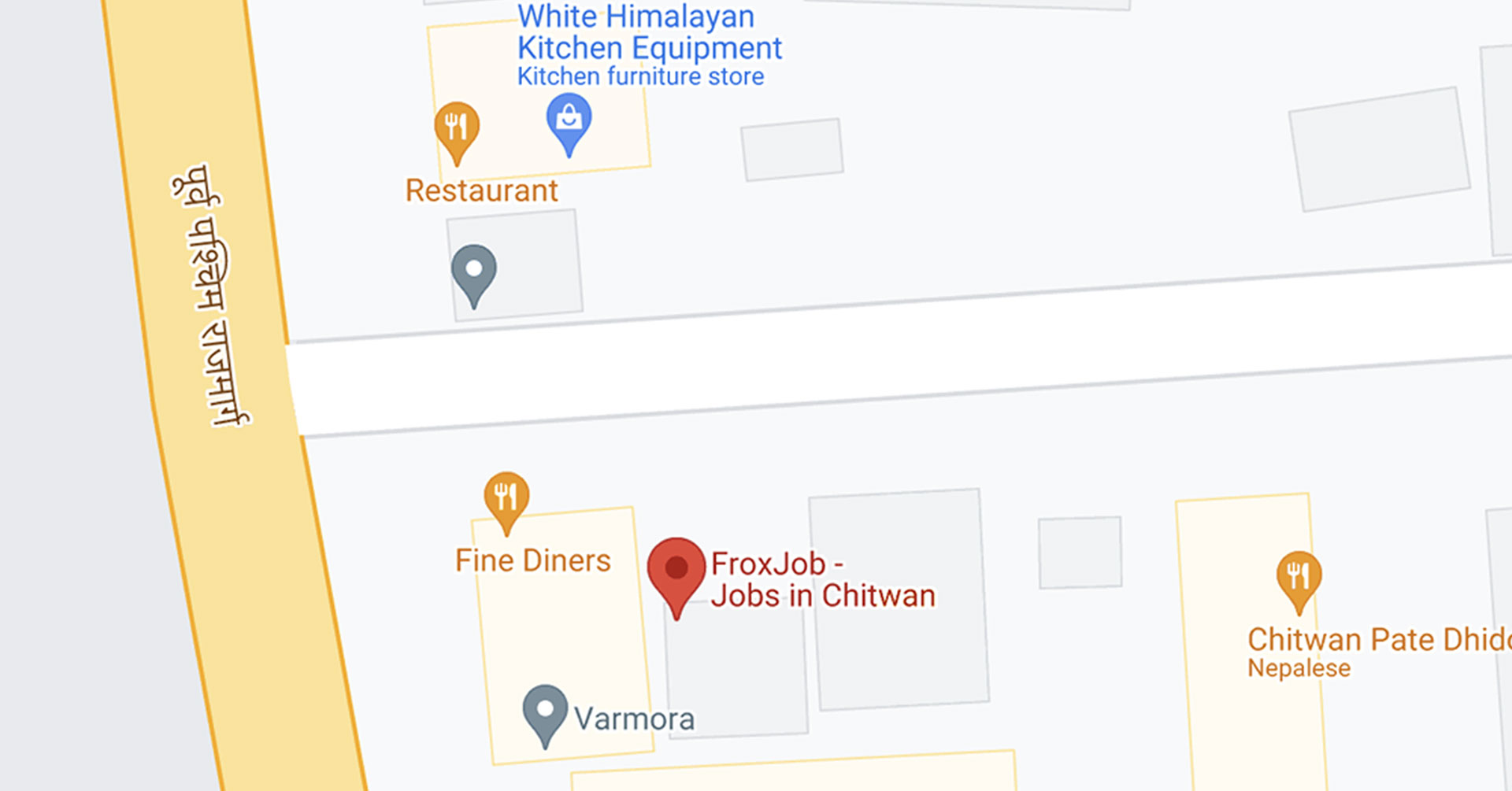Building a Professional CV: A Step-by-Step Guide for Job Seekers in Nepal

Building a Professional CV: A Step-by-Step Guide for Job Seekers in Nepal
Introduction
In Nepal's competitive job market, a well-written CV is your first and most powerful tool for making a good impression. Whether you are a recent graduate or an experienced professional, your CV speaks for you; it tells employers who you are, what you've accomplished, and why you're the best candidate for the job.
Yet, many job seekers in Nepal continue to struggle with creating a CV that is well-structured and effective in conveying their skills and experience. To make your job search easier, Froxjob has prepared this simple step-by-step approach to constructing a clean, professional, and effective CV that boosts your chances of being shortlisted.
Step-by-Step Guide to Building a Professional CV
1. Start with a Clean and Clear Format
A good CV is visually appealing, easy to read, and well-organized. Avoid complex designs unless you’re applying for creative roles.
Key formatting tips:
- Stick to professional fonts like Arial, Calibri, or Times New Roman
- Use font size 10–12 for text and 14–16 for headings
- Keep the layout consistent
- Avoid long paragraphs; use bullet points
- Save your CV as a PDF before sending
2. Add Your Personal Details at the Top
This section should be short and simple.
Include:
- Full Name
- Phone Number
- Email Address
- Location (City, District)
- LinkedIn Profile (optional but recommended)
Employers in Nepal focus more on qualifications and skills, not personal background.
3. Write a Strong Career Objective or Summary
This is a brief introduction about who you are and what you aim to achieve.
Example:
“A motivated BBA graduate with strong communication and analytical skills, seeking an opportunity in sales and marketing to contribute to business growth.”
Make it specific, short, and relevant to the job you’re applying for.
4. Highlight Your Work Experience (If Applicable)
For each job, include:
- Job Title
- Company Name
- Duration (Month/Year-Month/Year)
- Key Responsibilities
- Achievements (if any)
Tips:
- Start from your latest job
- Use action verbs like managed, led, developed, coordinated, and achieved
- Quantify results when possible
Example: “Increased sales by 20% within three months.”
5. Add Your Educational Background
List your education in reverse order (latest first).
Include:
- Degree
- Institution
- Year of Completion
If you’re a fresh graduate, you can put education above experience.
6. Showcase Your Skills
This section helps employers quickly understand your strengths.
Types of skills to include:
Technical Skills:
- MS Office
- Accounting software
- Programming languages
- Digital marketing tools
Soft Skills:
- Communication
- Teamwork
- Problem-solving
- Leadership
Make sure your skills match the role you’re applying for.
7. Add Certifications, Trainings, and Projects
This adds value, especially for a fresher.
Examples:
- Digital marketing course
- Sales training
- Academic projects
- Internships
These show your willingness to learn and grow.
8. Include Additional Information (Optional)
- Languages (e.g., Nepali, English, Hindi)
- Volunteering experience
- Awards & achievements
- Hobbies (only if relevant)
Keep this section short and meaningful.
9. Keep Your CV Updated and Error-Free
Nepali job seekers often overlook the importance of regularly updating their CVs. Make sure your CV is current and free from grammar or spelling mistakes.
Quick checklist:
- Spelling/grammar checked
- Updated contact details
- Tailored to each job
- PDF format
- Professional photo (optional, but use a simple passport-style photo if required)
Conclusion
A professional CV is more than a document; it’s your personal brand. By following these straightforward steps, you can craft a CV that stands out and effectively showcases your strengths. Whether you’re applying for your first job or aiming for career growth, a well-structured CV increases your chances of getting shortlisted.
If you require additional assistance, Froxjob provides career counseling and job-matching services to help you thrive in Nepal's job market.
Your next big opportunity might be just one CV away!





